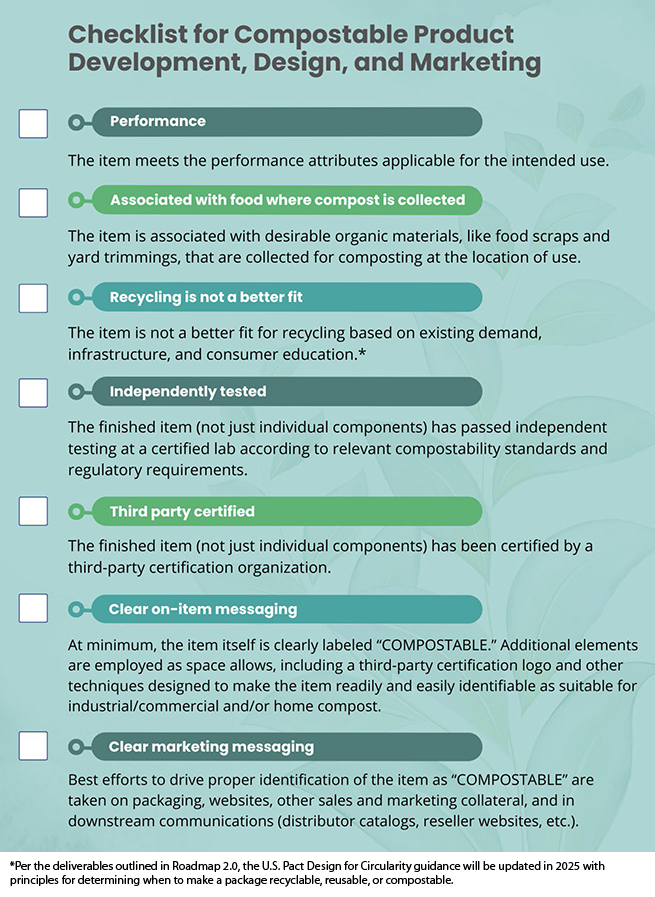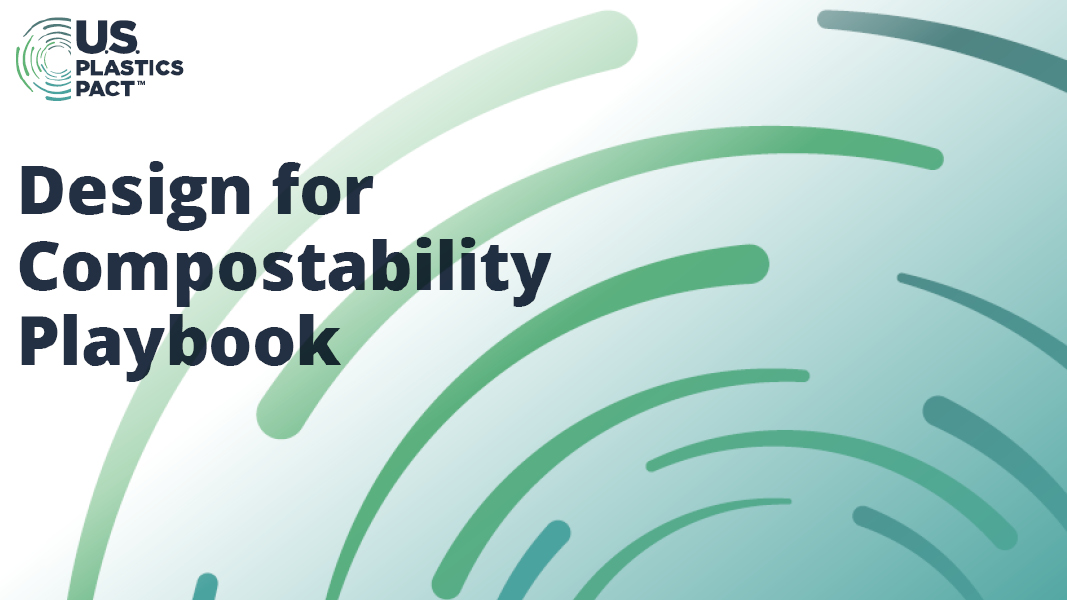Top: Graphics courtesy U.S. Plastics Pact
The U.S. Plastics Pact released its “Design for Compostability Playbook” in August 2024, along with similar Design for Circularity Playbooks on recyclability and reuse. The Pact describes itself as a solutions-focused consortium of businesses, government agencies, non-governmental organizations (NGOs), and research institutions at the forefront of efforts to foster a circular economy for plastics. “These reports are crucial tools that hold all of us accountable for designing sustainable and environmentally friendly plastic packaging,” said U.S. Plastics Pact CEO Jonathan Quinn. “By providing clear, actionable guidelines, we empower companies and organizations to make informed decisions to drive substantial improvements in plastic design and management. We all need to take responsibility, and these guidelines help us do just that.”
The Design for Compostability Playbook is a guide for decision making on compostable products to encourage alignment of items brought to market with the developing organics collection and processing system in the U.S. It starts with a set of key terms and definitions to utilize in conversations about compostable products. The section on product design looks at what is a good fit for compostability and the connection to food scraps and yard trimmings. The section on labeling addresses what the Pact says is the biggest issue facing composters that accept food scraps and packaging — contamination from non-compostable products. “Thorough and consistent on-item labeling is the basis for all other identification and education mechanisms, and is essential for scalable organics collection and processing systems that include compostable products.”
A checklist for compostable product development, design and marketing (see graphic below) — included in the Playbook’s Introduction — summarizes the essential “ingredients” in compostable packaging that is brought to market.
 :
:














